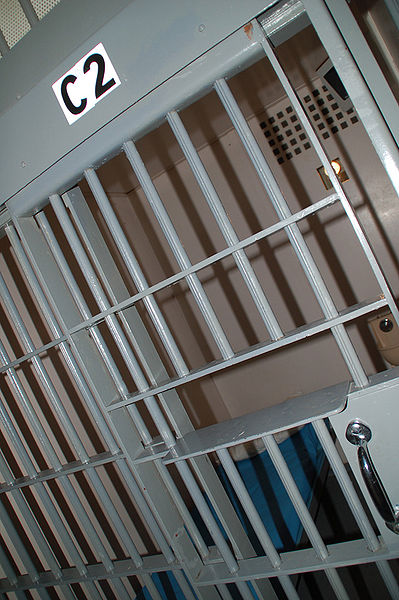 FLORENCE, Arizona (AP) -- Samuel Villegas Lopez became the first person ever to be executed in Arizona while witnesses other than prison officials saw catheters inserted into an inmate's veins -- a move the state Department of Corrections made after a federal judge recently sided with The Associated Press and Idaho news organizations seeking full viewing access to lethal injections.
FLORENCE, Arizona (AP) -- Samuel Villegas Lopez became the first person ever to be executed in Arizona while witnesses other than prison officials saw catheters inserted into an inmate's veins -- a move the state Department of Corrections made after a federal judge recently sided with The Associated Press and Idaho news organizations seeking full viewing access to lethal injections.
The ruling was upheld by the 9th U.S. Circuit Court of Appeals in San Francisco, meaning it was unlikely Arizona would have been able to keep its process limited much longer.
Until Wednesday, news media and victims' family members entered the death chamber at the state prison only after the inmate had been injected and covered with a sheet to his chest or neck.
This time, they watched on television screens set up in the death chamber as the execution team inserted Lopez with the catheters behind a curtain. The curtain was lifted just before a fatal dose of pentobarbital was sent coursing through Lopez's veins.
During the process, Lopez blinked often and showed no signs he was experiencing pain, although he slightly winced once.
As the execution team checked his veins, Lopez asked, ``It look all right?'' to which they responded: ``We're doing good.''
Toward the end, Lopez said he had a question: ``Are these the only two IV lines going to be inserted in me?''
Once the curtains were pulled, Lopez stared straight ahead and ignored the nine family members of his murder victim who were in the room to watch him die. When asked if he had last words, he said in a clear voice: ``No, I do not.''
As the drug was delivered, Lopez began breathing heavily, closing his eyes and yawning once before he appeared to fall asleep with his mouth slightly open. He never moved again.
The execution ended at 10:37 a.m. local time, about 40 minutes after the insertion process began. Arizona did not allow witnesses to watch as Lopez was brought into the death chamber and strapped to the table at his ankles and wrists and over his torso.
Dale Baich, a defense attorney who witnessed the execution and represents many death-row inmates in Arizona, said the new process was a ``step forward in creating transparency.'' But he said he hopes the Corrections Department eventually will allow witnesses to view the process from the very beginning.
Lopez, 49, was executed three days before his 50th birthday for the brutal rape and murder of 59-year-old Estafana Holmes of Phoenix about 26 years ago.
Her brother, Victor Arguijo of Fort Worth, Texas, and other family members from Phoenix and Texas addressed members of the media after watching the execution. They said they were not there for revenge but for justice for Holmes, a poor seamstress and grandmother who lived alone and whom they called ``Tefo.''
``It's been a long and difficult and frustrating road,'' Arguijo said. ``We now know and have confidence that the judicial system works for victims and their families even though at times our faith has wavered.''
He said the family hopes Lopez's death brings them closure and that Holmes' ``soul and spirit will now finally rest in peace.''
Lopez's attorney, Kelley Henry, said in a statement that his legal team was ``deeply troubled'' by the execution. She reiterated her arguments that Lopez was ``denied due process at every level,'' from his trial until recently, as courts declined to delay the execution to hear about his abusive and difficult childhood.
That evidence was never presented at trial and could have served as a mitigating factor and gotten him a sentence of life in prison rather than death.
``If we are going to have the death penalty, we should ensure that the process, at the very least, is fair and that it follows the rule of law,'' Henry said. ``Sadly, that did not happen in this case.''
Lopez was the state's fourth death-row inmate executed this year. Of the 125 inmates still on Arizona's death row, only five have been there longer than him.
Arizona is on pace to execute three more men this year, which would match the state's busiest year for executions and make it one of the nation's busiest death-penalty states.
Among Lopez's failed last-minute efforts to avoid the death penalty was a request with the Arizona Supreme Court to delay his execution until the state had a new governor, arguing Gov. Jan Brewer and the state's clemency board were prejudiced against him.
Lopez's attorneys say board members were improperly appointed and didn't have the authority to consider death-penalty cases because of open-meetings violations, statements to members of the media that showed prejudice, and other factors.
At Lopez's clemency board hearing Friday, board members called him the ``worst of the worst'' and said the brutality of his crime and Holmes' heartbroken family members held great sway with them. They voted unanimously against recommending his sentence be reduced to life in prison or that it be delayed in any way.
In an affidavit provided to the board, Lopez wrote that he has no memory of the crime because he had been spending so much time sniffing paint that he would forget entire days.
- Home
- News
- Opinion
- Entertainment
- Classified
- About Us
 MLK Breakfast
MLK Breakfast- Community
- Foundation
- Obituaries
- Donate
11-27-2024 12:03 am • PDX and SEA Weather












































































































































































































































































































